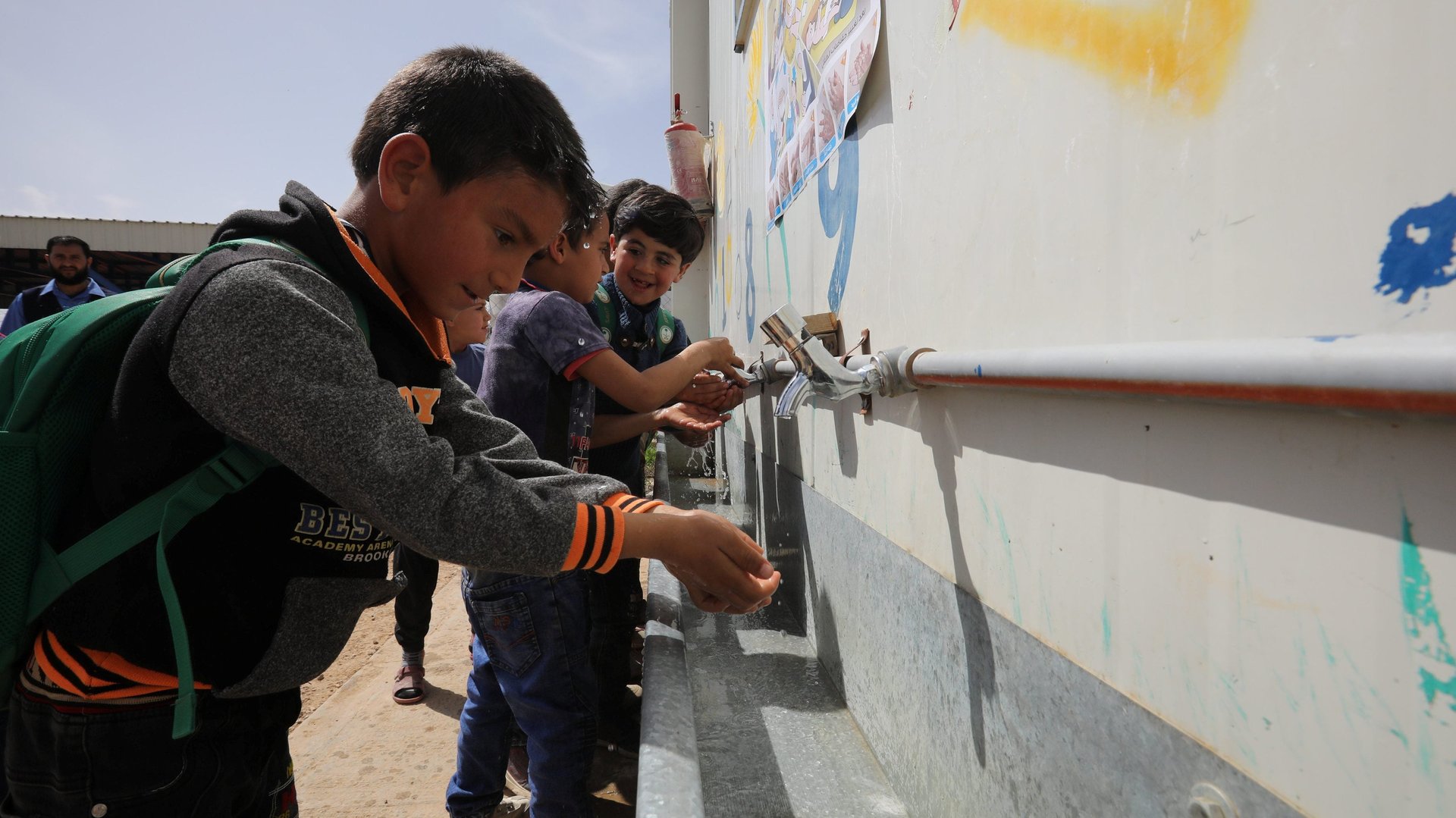The UN is seeking $2 billion to help war-torn countries fight coronavirus
The UN today appealed for some $2 billion in global funding to help both poor countries and those wracked by war tackle the coronavirus pandemic.


The UN today appealed for some $2 billion in global funding to help both poor countries and those wracked by war tackle the coronavirus pandemic.
Although rich countries are focused on battling the pandemic at home, UN officials warn that what happens elsewhere in the world will still affect them. “The hard truth is, in order to protect their own people, it’s going to be smart to help the poorest countries engage for this response, too,” Mark Lowcock, under secretary general for humanitarian affairs and emergency relief, told the New York Times on Tuesday.
During the past week, Syria, the site of the deadliest armed conflict of the last decade, announced its first confirmed Covid-19 case. So did Libya and Gaza. The Syrian regime has imposed various lockdown measures to limit the spread of the virus, closing restaurants, cafes, and other businesses. But like all conflict zones, it will be especially hard for it to tackle the new coronavirus. Here’s why:
Social distancing is a luxury
It’s hard enough to enact social distancing in rich countries: Just take a look at the UK, where many Brits brazenly ignored official warnings, forcing the government to announce stricter measures. But aside from the question of personal sacrifice, staying physically apart from one another is not always possible in conflict zones or poor countries where people don’t have much choice but to congregate in smaller, more crowded and more confined spaces.
The risk is especially acute in informal tented settlements and refugee camps. Since December alone, more than 1 million Syrians have fled their homes—the highest level of displacement since the war began—amid a regime offensive in the country’s northwest. Overcrowding and minimal access to basic sanitation exacerbates the risk of spreading the virus in these environments.
Limited testing capabilities
The WHO has so far sent 1.5 million testing kits to some 120 countries. But in Libya, which has been mired in a civil war since 2014, there remains a severe shortage. The same is also true in Gaza, which has recently received 200 testing kits from Israel. Similarly, the UN agency is providing Syria—a country of about 20 million—with about 300 kits today, and will send an additional 2,000 shortly.
These numbers are hardly enough. For the sake of comparison, the UK government just purchased 3.5 million testing kits for domestic use. Experts say blanket testing is one of the most effective ways to contain the spread of coronavirus.
Limited medical care
In Gaza, which has lived under a punishing Israeli blockade for more than a decade, there’s an acute shortage of medical facilities in what is one of the most densely populated places on Earth. In addition to a shortage of protective equipment for healthcare workers, there are fewer than 100 intensive care beds for a population of 1.8 million.
In Yemen, which has been the target of a Saudi-led air campaign for five years, medical facilities are also in dire straits. Since October 2016, a cholera outbreak has crippled the health care system, leaving more than 2,500 people dead. Health experts estimate there are more than 2 million cases of cholera in the country to date. Only half of Yemen’s medical facilities are operating, and there’s a severe shortage of medical staff and equipment in those that remain open.
Hospitals and medical workers in Yemen, Gaza, Libya, and Syria have also regularly been the targets of attack. Forces loyal to the Syrian regime, for example, have hit hospitals and clinics in opposition-held areas, killing hundreds of health workers. In Yemen, Saudi jets have targeted hospitals during airstrikes. That has impacted the quantity and standard of care in these countries in recent years.
Humanitarians scale back
Many non-profits have scaled down their presence on the ground in conflict areas since the outbreak began. According to ACAPS, which tracks and analyzes the humanitarian sector, some organizations have closed field offices and others have told international staff to fly home. These measures could “disrupt humanitarian operations,” according to a recent report (pdf) from the organization.
And the money?
The WHO has to date received $195 million in funds to fight the spread of the novel coronavirus. Officials have used that money to distribute protective equipment like masks and gloves to nearly 70 countries. Still, a lot more protective equipment and tests are needed, and that will require a lot more resources.
But major outbreaks spreading through rich countries have upended their economies and forced them to pass large-scale domestic stimulus packages, costing at least $2.8 trillion so far. The UN’s plea for another $2 billion might therefore fall on deaf ears.
The US, traditionally one of the largest funders of the UN, has been slower to send help. President Trump is a longtime critic of the global agency, and the US has contributed less than Japan, Germany, or the UK to the WHO’s first coronavirus funding appeal. Ultimately, that doesn’t bode well for the world’s most vulnerable places.